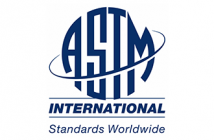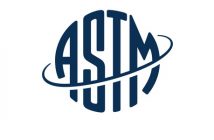Adventure Park Insider breaks down the key takeaways so you know, why you should care, how it will impact your operation, and where you are accountable if the ballot passes.
As part of its ongoing efforts to update the ASTM F2959 standard for aerial adventure courses and make it more practical for the industry to use, the F2959 task group is balloting the design section of the standard. Ballots are due by Jan. 16, which means that industry members have a few days to review, vote, and comment—something the task group strongly urges operators and builders to do.
Initially, the F2959 ASTM standard was brief, barely two pages in length. But the brevity was deceiving: those two pages merely referenced dozens of other standards. In practice, this made the standard very difficult to follow. F2959 is currently pulling many of the referenced standards into F2959, and editing the language so that it reflects the terminology of the aerial adventure industry.
The intent of the ballot is to get a lot of feedback, so that the task group can approve the portions that are ready and focus on revising those that aren’t. The aim is to create a standard in alignment with the broader F24 amusement park standard, “while being readable as a stand-alone document.” That will encourage understanding and use of it within the industry, and make it more likely that jurisdictions adopt it as part of regulation, the task group believes.
To these ends, the task group is seeking broad input, not just that of the engineers and regulators who comprise most of the task group. Among the few operators to regularly take part is Jamie Barrow of Vail Resorts, who pointed out many of the key areas of interest that we’re highlighting here.
While the design standard impacts builders most of all, it has some implications for operators as well. (More on them in a moment.) Every industry member who can spend 30 minutes or more to read the document and then vote is encouraged to do so. If you’re not a member of ASTM, it costs $75 to join and be able to vote. Comments and votes received after the Jan. 16 ballot deadline don’t count, but the task group can still consider them as it moves the standard forward.
There are several areas in particular where operators and builders should weigh in:
- the adoption of terms more suited to aerial adventure parks than to the amusement park world, from which F2959 has been developed
- a requirement to identify safety hazards for guests, and means for mitigating each hazard
- the safety factors that apply to wire ropes used as structures
The adoption of industry terminology should be a positive development for aerial parks, but some members of the amusement park industry—who also have a say in the matter—are wary about the changes. They are concerned, for example, that changing “ride” to “device” may lead some to conclude that some structural components are not covered by the standard. Is a harness considered part of the zip line “device?”
One key provision in the standard currently being balloted concerns g-force testing, which has been required in the standard even though there is no reliable means of testing g-forces during zip line braking. This provision, which is part of the amusement park standard, helps explain why F2959 is trying to make the adventure park standard more suited to the industry.
On this point, the current document removes any references to g-force tests and notes, “The F2959 task group is currently collaborating with the F2137 task group to determine a testing method for measuring dynamic characteristics on Aerial Adventure Courses. When a testing method has been determined and test data is available for evaluation, revisions to this section will be balloted.”
The call to identify and mitigate customer safety hazards could have broad consequences. While builders and designers routinely address safety hazards, the requirement that these be enumerated, and that the mitigation be spelled out, adds a new element to design and construction.
Operations could be affected, too: the mitigation for a specific hazard might involve changes to operations, or require that a certain set of procedures be followed. The proposed standard also spells out that operators must have a “redundant braking system” for zip lines, for example.
Currently, the wording for this provision, 11.5.2.6, is somewhat vague: “The device analysis shall identify the most significant factors that may affect patron safety and shall include mitigation for each factor.”
It is important for industry participants to contribute to standards development. Take a few minutes to investigate the current ballot. If you do not understand any of the proposed changes, or feel a need to vote negative on this ballot, contact task group chairman Jared Krupa at 775-355-0505.
In addition, at the ACCT Conference in February, there are sessions you can attend that will review the standard, starting with the ASTM F2959 Task Group Meeting on Feb. 3 at 8:30 a.m. The meeting is open to all interested attendees. While it occurs after the ballot is closed, it will be a good opportunity to gain a better understanding of the standard, and learn how to get more involved in the future.




